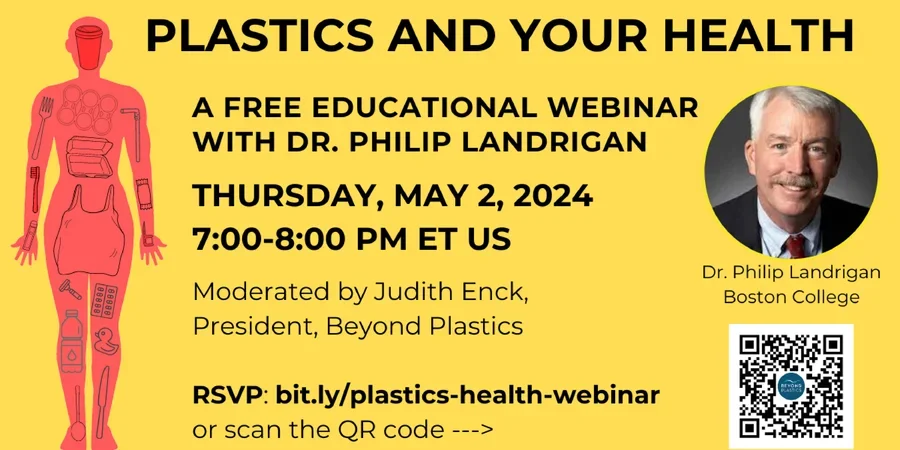Webinar: Plastics and Your Health

Contact:
OPEN TO THE PUBLIC | The negative impacts of plastic on human health are increasingly visible and increasingly costly. This March, the New England Journal of Medicine released the results of a study detecting micro- and nanoplastics in the carotid artery plaque of 58% of patients, and found that it measurably increased the risk of heart attack, stroke, and all-cause mortality in those patients.
What does this mean for us? On Thursday, May 2 from 7-8 pm ET, please join Beyond Plastics for a conversation with Philip J. Landrigan, M.D. on Plastics and Your Health.
Plastic has enabled extraordinary conveniences but the price tag in human and environmental health is turning out to be steep. Micro- and nano plastics now suffuse the air, water, and soil and are present throughout the food web. They are also present inside of us. Researchers have located micro- and nanoplastics in human intestine, placenta, liver, spleen, and lymph node tissues, as well as in blood, breast milk, and the fetus. Chemicals added to plastics such as PFAS, phthalates, and bisphenols are present in the bodies of nearly all Americans. Dr. Landrigan, who is a pediatrician and toxicologist, is at the forefront of research and thinking about what this means for our health and longevity. In the pages of March’s New England Journal he asks: Should exposure to microplastics and nanoplastics be considered a cardiovascular risk factor? What organs in addition to the heart may be at risk? How can we reduce exposure?
See more information in the Facebook event